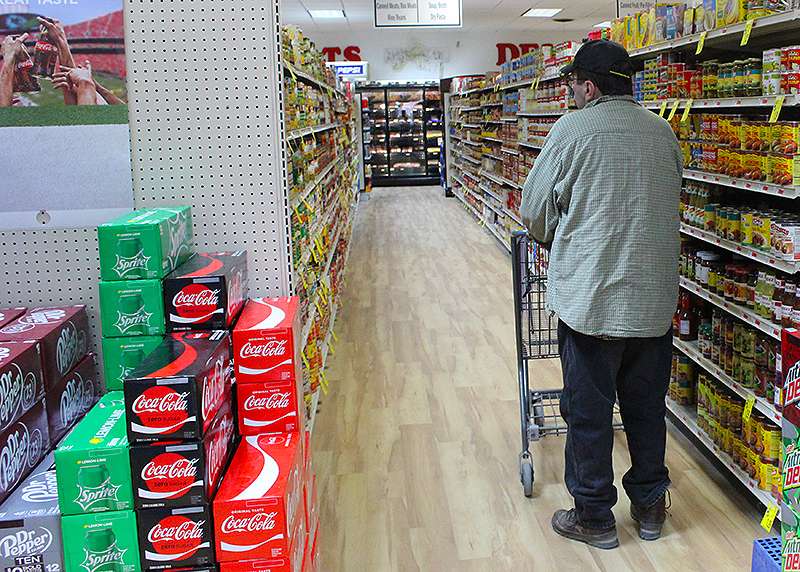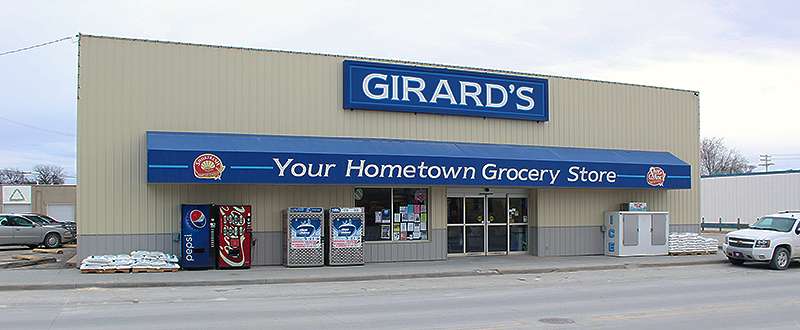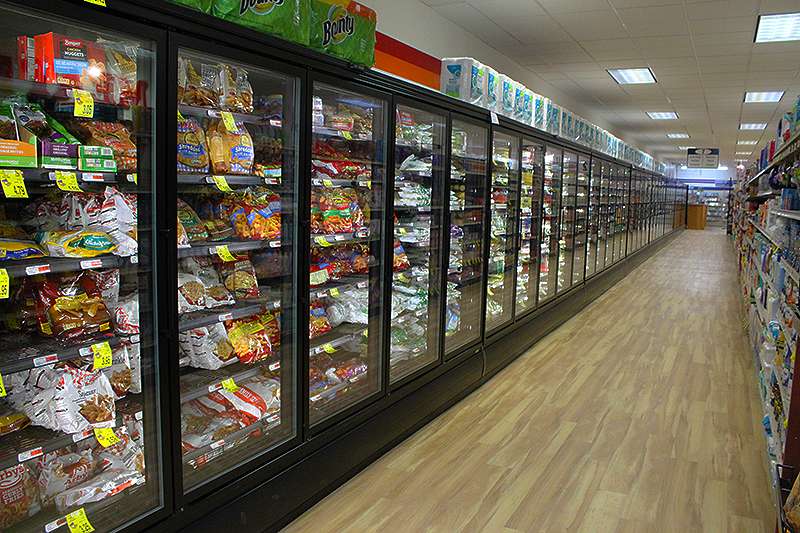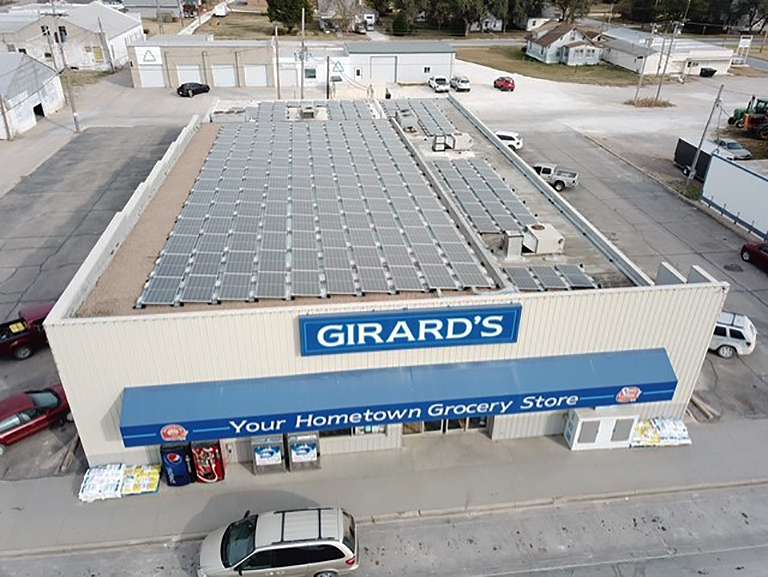
Part one of a series.
By CRISTINA JANNEY
Hays Post
C. W. Seaman, 77, lives seven miles northeast of Natoma. The only source of groceries in the small community of 300 is a convenience store.
It carries milk, bread, ice cream, drinks, some meats and canned goods, candy and crackers — but no fresh produce.
He has to drive 42 miles to Hays or 30 miles to Osborne to the nearest grocery store. It's usually about a half-day trip.
A lack of access to food, especially healthy fresh produce, is a fact of life for many in rural Kansas.

Seven counties in northwest Kansas, including Ellis County, contain food deserts, according to the most recent data released by the United States Department of Agriculture.
A food desert is an area defined by the USDA as low income, based on poverty rates and area median income levels. It is also considered low access, an area where people live more than 10 miles from a grocery store in a rural area and more than one mile from a grocery store in an urban area.
The lack of grocery stores is not only harmful to individual consumers, but their departure is also harmful to the local economy.
Rial Carver, Extension specialist with K-State Research and Extension’s Rural Grocery Initiative, said food deserts can be viewed in two ways.
Grocery stores are economic drivers in the community. They provide jobs, as well as contribute to the tax base. For the consumer, they are a source of healthy, fresh food.
A single new dollar spent in the community is worth $7 to the community, according to a study by South Dakota State University. Those dollars are flying out of rural communities to the tune of millions of dollars annually.
Since the initiative started keeping statistics on independent grocery stores in Kansas in 2008, 100 independent grocery stores have closed. About half of those reopened under new owners.
It's been at least 11 years since there's been a grocery store in Natoma.
“In all honesty, there is just not enough people in the Natoma area to support one,” Seaman said.
“It is a problem for our small communities,” he continued. “We are all ‘Let’s get a grant and open a grocery store,' but it’s an economic decision. There’s got to be enough people to support the store to make it go. If there isn’t, you can do whatever you want to do, and it's still not going to survive.”

John Girard, owner of Girard's IGA in Osborne, said the U.S. system of food commerce creates obstacles for independent grocery store owners in rural areas.
Chains, such as Dillons, Walmart and Dollar General, are able to negotiate better prices from suppliers. Independent stores struggle to compete.
Many suppliers also require minimum orders, a challenge for stores with less volume.
It's hard to control costs for small groceries, because the items that set them a part from small discount retailers in their communities, including milk, meat and produce cost the most to maintain, Girard said.
All these items require refrigeration, which means higher electricity bills. They also are more perishable, an enemy for a store with low volume.
The profit made on dry groceries once offset the cost of the healthy perishables at the local grocery store, Girard said. However, many local residents are now turning to discount retailers or big box stores in other communities to buy those goods.

However, Girard said those shoppers may not be getting the deal they think.
Girard is fighting a consumer mindset that bigger is better. Some residents of Osborne, population 1,500, are driving 90 miles to buy groceries in Hays.
"I tell people if you want to go there and look at Walmart and look at all the different variety, come back and tell me what you paid for it. Tell me what item you liked. ... If I can save you 180 miles driving at the same cost, then we've both won."
Seaman in Natoma expressed concern for the elderly and disabled who are unable to make the long drives.
“We have people who look after people,” he said. “We take care of our own, so to speak, so I am sure people will pick up groceries for those who need to. They make good I guess."
After 40 years of struggling to convince people to shop local, the pandemic resulted in a surge of customers for Girard. 2020 was a banner year, and 2021 is looking even better, he said.
People from far away as Hays drove to Osborne to shop, where the store was less crowded, didn't require masks and didn't experience the product shortages.
Girard said staying connected with his community has been important to his success. He's been on various boards in town during the last two decades.
He served on the hospital board. One percent of the taxes he collects on groceries goes to the local hospital.
"Why should we beautify Hays?" he said of the taxes collected on groceries. "Part of that money goes to the city of Hays."
In a small town, business is not something that happens only in the confines of an office. He is regularly approached to support community causes.
"One night I was mowing my yard, and I spent $400 on donations," he said. "We put back into the community."

Carver of the Rural Grocery Store Initiative said Osborne is not isolated in its battle to educate the public on the benefits of shopping local. Creating jobs, contributing to the tax base and donating to charity are not items that fit on a grocery store flyer, she said.
Rural grocery stores aren't just a place to buy lettuce, they have also evolved into community hubs as other gather spaces and organizations in small towns have faded away.
The local newspaper only prints weekly, so the local funeral home posts funeral notices at Girard's grocery store.
"Sometimes the only time people get out is to come to the grocery store," Girard said.
As costs increase, Girard said he has had to decrease overhead to keep up with competitors. Shoppers weren't happy when he eliminated grocery carry out.
He's also upgraded infrastructure, a significant initial investment, but work that promises to reduce overhead costs.
He's replaced old refrigeration units with newer, more efficient units and installed solar panels on the store's roof in 2020 to reduce electricity costs. He also replaced an old floor that needed to be waxed with new low-maintenance flooring. The store went to emailed sale flyers instead of printed, mailed grocery flyers.
"I say we've been competitive because we've constantly changed," he said. "We haven't been stagnant."

Girard may be one of the last in his line. Finding someone to take on a small grocery store in a small town is a tall order. Girard, who regularly works up to a 14-hour day, said he would be unlikely to find a buyer for his store. He hopes to recruit one of his children to take over the business.
Carver of the Rural Grocery Initiative echoed those concerns.
At one time in rural communities, a small business would have been passed to a younger member of the family. That is often not the case anymore. Transitioning to a new owner can take years of planning for a small business.
Girard said he thinks small businesses, including groceries, will come back to small towns.
"In our small towns, we're better than Amazon, because you're not going to wait two days to get it. If you're out of toilet paper, you can't wait to order from Amazon. People struggle to plan ahead, they want it, and they want it now.
"That's our challenge to keep our store well-stocked to beat Amazon."






